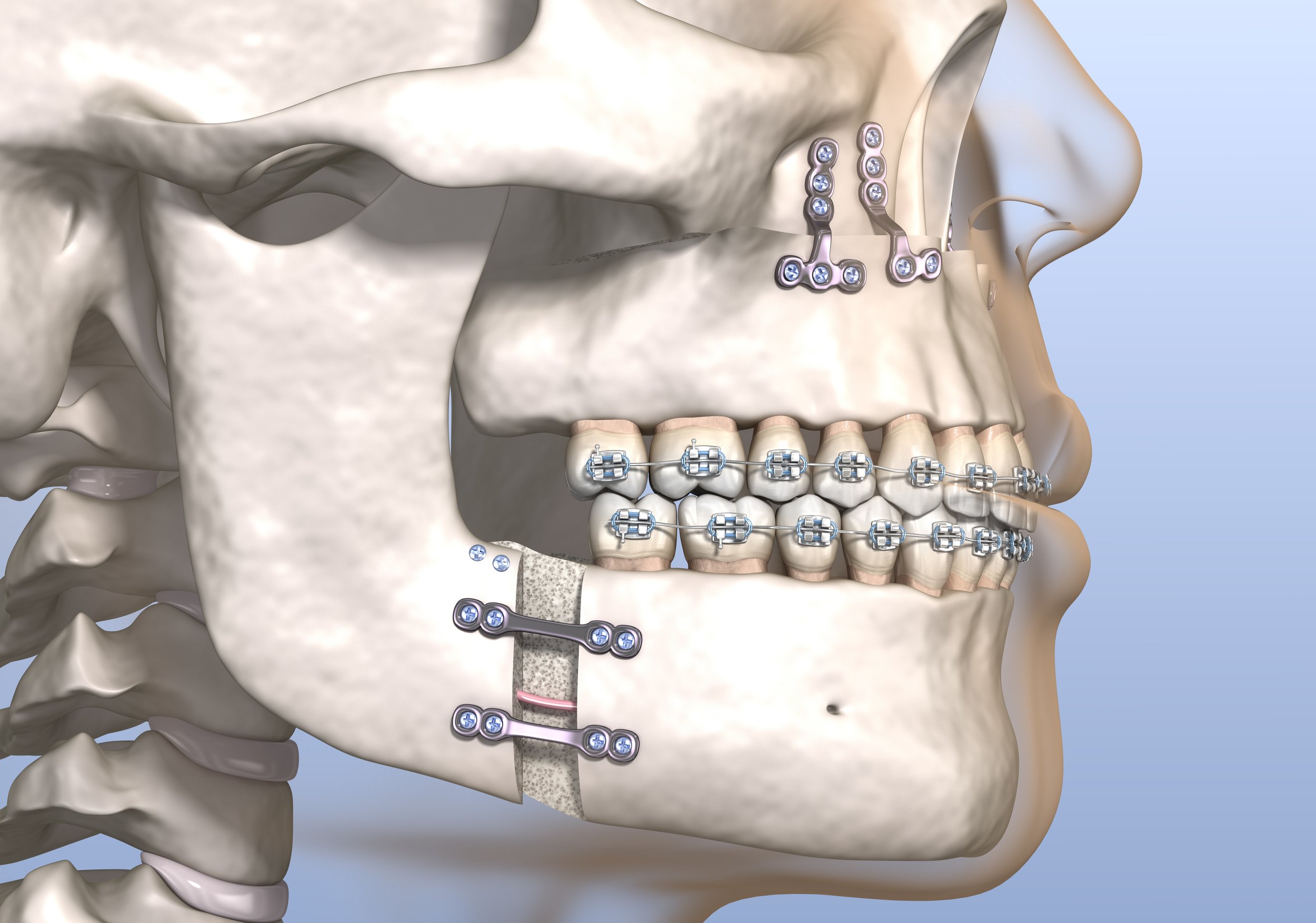In Depth: What is Orthognathic Surgery and Would You Benefit From it?
Orthognathic Surgery is performed by an oral maxillofacial surgeon to correct a wide range of skeletal and dental irregularities including the misalignment of jaws and teeth. The surgery can improve chewing, speaking and breathing.
Why would you benefit from orthognathic treatment?
This type of treatment can correct your occlusion (bite) and change your facial profile. In some cases treatment is planned to improve your bite, with minimal change to your facial appearance, whilst in other cases, there will be more noticeable change to your facial appearance (e.g. if you have a prominent lower jaw, or a small setback lower jaw).
What does treatment involve?
Treatment is carried out over a period of 2-3 years, starting with orthodontic treatment to reposition your teeth with fixed appliances. Approximately two thirds of the way through treatment, patients will be ready for jaw surgery. Following the surgery, orthodontic treatment with fixed appliances will continue for another 6-9 months. On completion, a combination of fixed and removable retainers will be fitted to maintain the teeth in their new positions.
What does the jaw surgery involve?
Jaw surgery may involve surgery to the upper jaw (maxilla) or the lower jaw (mandible) or a combination of both depending on the concerns and individual assessment. The surgery is carried out from inside the mouth so there are no visible scars to the face. For some types of surgery there may be a tiny incision made at the angle of the jaw, but this is virtually invisible a few weeks after the surgery. During jaw surgery the jaws are repositioned and held in their new position by small screws and plates beneath the gum, which are commonly left there indefinitely. The patient will not have your jaws wired together. However, they will be required to wear orthodontic elastics, whilst their bite settles.
How long is the hospital stay and recovery time?
Most patients stay in hospital for one night and need between 2 and 4 weeks off work/college/university. The speed of recovery varies from patient to patient.
The patient will probably be swollen after the operation with the swelling of the face at its worst 36-48 hours after. This usually improves over the following 2-3 weeks with the final facial appearance being apparent over a few months. The amount of change in the facial appearance will depend on whether your surgery was planned to have minimal or a more noticeable effect on your appearance.
It can take time for patients to get use to their new bite and facial appearance.
After-care
We encourage patients to start drinking and eating very soft foods after the surgery. Patients should return to a normal diet as soon as possible, avoiding hard foods for up to six weeks whilst the jaw bones heal.
Tooth brushing is very important throughout treatment but especially so after surgery. You are advised to use a soft toothbrush for the first few weeks after surgery.
Your oral surgeon will give more detailed advice before and after the surgery.
We usually review patients weekly after the surgery for 4 to 6 weeks.
Consultation with a surgeon
If you want to find out more about the surgical procedure specific to your treatment we can recommend, and arrange a joint consultation with a highly experienced orthognathic surgeon.



